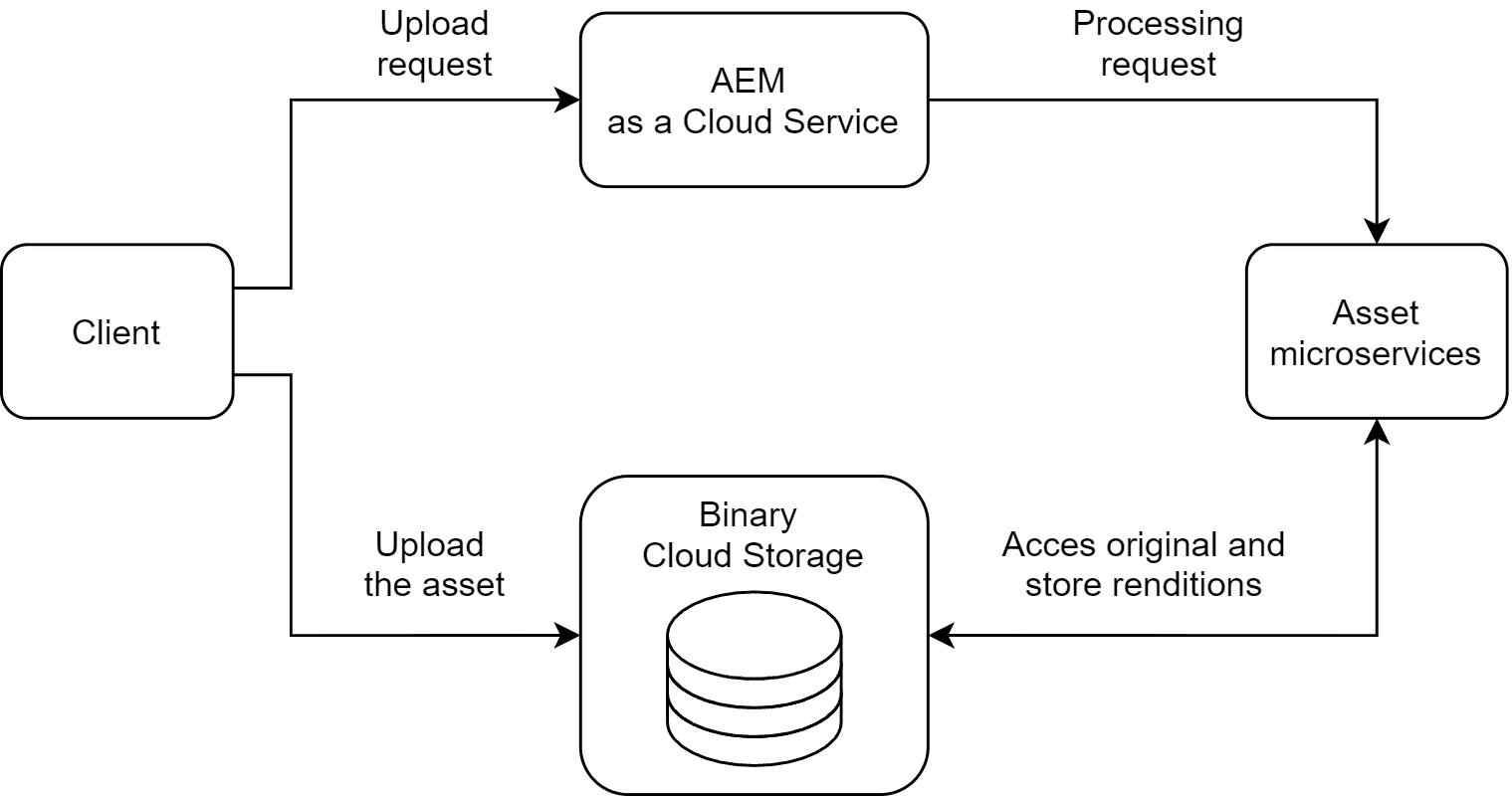
Abstract
Renditions in AEM as a Cloud Service
AEM as a Cloud Service introduces a different approach to handling Assets. The Assets are no longer stored within AEM itself. Instead, they are stored in cloud binary storage. As for Asset processing, the work is delegated to cloud-native Asset microservices.
A simplified version of the diagram available in the official Adobe documentation is presented below.
AEM as Cloud Service - Assets overview
As seen in the diagram, the processing starts with the Client requesting the Asset upload. The actual upload is performed directly to the Binary Cloud Storage. Upon completion of the upload, AEM requests the Asset microservices to process the renditions. The Asset microservices architecture is then obtaining the original Asset binary from Binary Cloud Storage, performing the requested actions on the image, and finally stores the renditions back in Binary Cloud Storage.
Local Development
AEM as a Cloud Service SDK
Local development is supported by the AEM as a Cloud Service SDK. The process of setting up the runtime locally is quite simple and well documented.
However...
The AEM as a Cloud Service SDK is not a 1:1 copy of the actual runtime that's running in the cloud.
You can probably already guess where this is going... You will encounter numerous differences in how the local development behaves, compared to the Cloud. Let's quickly jump into Tools ➡ Assets to create a Processing Profile to define some renditions to be generated.
Let's take a look at the Cloud environment first.
Read Full Blog
Q&A
Please use this thread to ask the related questions.
Kautuk Sahni
